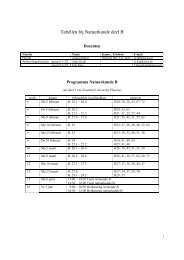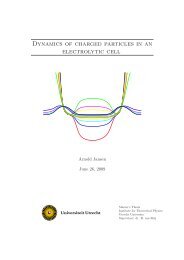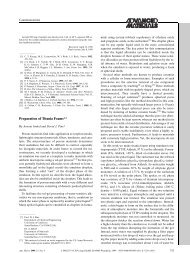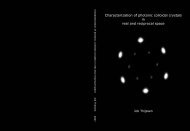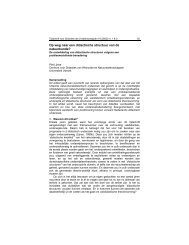Sedimentation Equilibrium of Mixtures of Charged Colloids
Sedimentation Equilibrium of Mixtures of Charged Colloids
Sedimentation Equilibrium of Mixtures of Charged Colloids
Create successful ePaper yourself
Turn your PDF publications into a flip-book with our unique Google optimized e-Paper software.
2Case (a)4.5Case (a)ρ +E (mV/cm)1.510.5ρ (µM)Case (b)31.5Case (c)ρ −0 5 10 15 20x (cm)00 5 10 15 20x (cm)Figure 4.2: The electric field <strong>of</strong> the three cases (pointing upwards), and thesalt pr<strong>of</strong>iles <strong>of</strong> case (a) (inset). Case (b) has an almost constant electric field,while case (a) and (c) both show a sharp crossover at the height where theircomponents form an interface. At this same height the salt pr<strong>of</strong>iles show acusp, at least on the cm length scale.Since ρ i (x i ) ≠ 0 at its maximum, we haveφ ′ (x i ) = 1 ⇒ E = mgZ i L i Ze(4.9)So, if ρ i (x) has a maximum at 0 < x i < H, the electric field must beE x (x i ) = mg/Ze. For many models using hard-core particles this maximumwill always occur, but since we’re considering our components as continuousfields, components can have their (local) maximum at the boundaries. Therelation between φ and ρ in the linear regimes becomes visible when weexpand (4.3):[ ( xρ i (x) = a i 1+ − +Z i φ(x) ) + 1 ( x − +Z i φ(x) ) (2 (− x +O +Z i φ(x) ) ) 3].L i 2 L i L i(4.10)For ρ i (x) to be (approximately) linear, φ(x) must satisfyφ(x) =x −ɛ x + c, (4.11)Z i L i Z i L i20




